
The Trois poèmes d'amour (Three Love Poems) is a 1914 song cycle for voice and piano by Erik Satie. It is the only set of mélodies (French art songs) Satie composed to his own texts. [1] In performance the set lasts between 2 and 3 minutes.

The Trois poèmes d'amour (Three Love Poems) is a 1914 song cycle for voice and piano by Erik Satie. It is the only set of mélodies (French art songs) Satie composed to his own texts. [1] In performance the set lasts between 2 and 3 minutes.
The Trois poèmes d'amour is Satie's modern reimagining of Medieval French troubadour songs. He completed the set in Paris between November 20 and December 2, 1914. It consists of three tiny 8-bar tunes:

The music and texts of the poèmes d'amour were written in a deliberately archaic style spiced with offbeat contemporary twists. In the manner of his humoristic piano suites of the period, Satie originally adorned the songs with extramusical commentaries, including a preface which alludes to expressions of courtly love "in ancient times":
These poems do not discuss the love of Glory, the love of Lucre, the love of Commerce or of Geography. No. These poems are poems of the love...of Love; they are simple and devout pages wherein are reflected all the tenderness of a virtuous man, very proper in his ways. You can listen to them without fear. [1]
Satie's poems are ironic, dispassionate supplications to a seemingly aloof figure of adoration. This muse is suddenly brought into the present-day world in the concluding "Ta parure est secrète", in which Satie writes, "My lovely cheerful one/Smokes a cigarette." [1] Satie constructed his rhymes so at the end of each verse he could spoof the vocalized mute "e" in sung French to absurd effect. According to musicologist Patrick Gowers, singers who attempted to tone down this joke infuriated him. [2]
Musically the songs are all in simple ternary form and identical in rhythm, six 8th-notes and a quarter note, though with subtle harmonic differences. This closely interwoven tripartite structure harkens back to such early Satie works as the Gymnopédies (1888), which have been likened to viewing a sculpture from three different angles. The vocal lines are in the spirit of plainsong [3] and the opening "Ne suis que grain de sable" is to be sung in the manner of the 11th century Gregorian chant "Victimae paschali laudes", which Satie references in the score. [4] [5] [6] [7]
The original notebooks for the poèmes d'amour, unearthed by Robert Orledge, show Satie also wrote additional prefaces for each song and, as a final joke, deliberately numbered the songs incorrectly as 1–3–2. [8]
Satie's motivation for creating this strangely retrospective piece is one of the more intriguing mysteries of his canon. He had written no art songs since the late 1880s, and had largely abandoned his early medieval influences after the Messe des pauvres of 1895. [9] His need to express himself in words as well as music was evident early in his career and found numerous outlets in the 1910s, [10] but this was his lone attempt at lyric poetry. And the subject of love was an odd one for Satie, whose known romantic experience was limited to a short, youthful affair with the painter Suzanne Valadon in the early 1890s. He ultimately dismissed the emotion as "very comical". [11] There is speculation that Satie may have had a fling with the feminist poet Henriette Sauret before the war, which in turn inspired the song cycle, but this remains unconfirmed. [1]

Performance of the Trois poèmes d'amour was delayed by the outbreak of World War I. The composer dedicated the cycle to Henri Fabert (1879–1941), a tenor at the Paris Opera, who with Satie at the piano gave the premiere at the École Lucien de Flagny in Paris on April 2, 1916. As the original score was intended for a mezzo-soprano, Satie transposed the vocal lines for Fabert. [12] He then wrote out a neat manuscript copy for mezzo vocalist Jane Bathori, who kept it in her recital repertory for many years. [12] [13] Contemporary performances are typically sung by either a mezzo or baritone.
When Rouart-Lerolle et Cie published the score later in 1916, Satie chose to remove all the extramusical verbiage – the prefaces, odd numbering, even the witty playing directions – and allow the songs to stand on their own merits. At the proof stage he added some chromatic grace notes to the piano part of "Ta parure est secrète" which seem at odds with the work's faux-medieval simplicity, but reinforce its subtly humorous anachronistic tone. [12]
Today the Trois poèmes d'amour rate among Satie's more obscure compositions, although it has had its champions. Patrick Gowers considered it more "individual" than Satie's next two art song cycles, the Trois mélodies (1916) and Quatre petites mélodies (1920). [2] In 1993, longtime Satie enthusiast Friedrich Cerha arranged the set for contralto and chamber orchestra. [14]
Gabriel Bacquier with Aldo Ciccolini, piano (EMI, 1970), Elaine Bonazzi and Frank Glazer (Candide, 1970), Marjanne Kweksilber and Reinbert de Leeuw (Harlekijn, 1976, reissued by Philips Classics 2006), Bruno Laplante and Marc Durand (Calliope, 1985), Rainer Pachner and Ramon Walter (Aurophon, 1988), Stephen Varcoe and Graham Johnson (Hyperion, 1993), Anne-Sophie Schmidt with Jean-Pierre Armengaud (Mandala, 1999), Anne-May Krüger and Mike Svoboda (Wergo, 2008), Constanze Brüning and Johannes Cernota (Jaro, 2010).
Sources

Eric Alfred Leslie Satie, who signed his name Erik Satie after 1884, was a French composer and pianist. He was the son of a French father and a British mother. He studied at the Paris Conservatoire, but was an undistinguished student and obtained no diploma. In the 1880s he worked as a pianist in café-cabaret in Montmartre, Paris, and began composing works, mostly for solo piano, such as his Gymnopédies and Gnossiennes. He also wrote music for a Rosicrucian sect to which he was briefly attached.
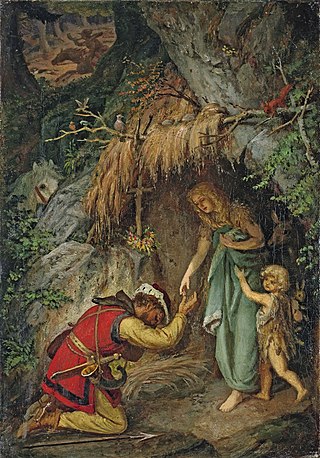
Geneviève de Brabant is a theatre piece composed around 1900 by Erik Satie. The score was intended as incidental music for a three-act comedy in verse and prose by J. P. Contamine de Latour, based on the medieval legend of Genevieve of Brabant. Unproduced at the time, its existence was not discovered until after Satie's death in 1925.
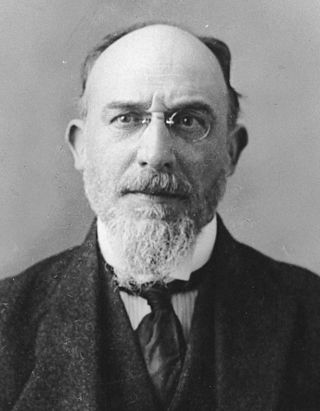
The Nocturnes are five piano pieces by Erik Satie. They were written between August and November 1919. With the exception of the Premier Menuet (1920) they were his final works for solo piano, and are considered among his most significant achievements in the genre. The Nocturnes stand apart from Satie's piano music of the 1910s in their complete seriousness, lacking the zany titles, musical parody, and extramusical texts he typically featured in his scores of the time. In performance the set lasts about 13 minutes.
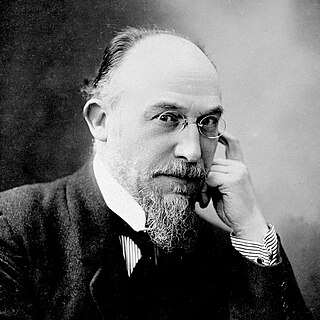
The Avant-dernières pensées is a 1915 piano composition by Erik Satie. The last of his humoristic piano suites of the 1910s, it was premiered by the composer at the Galerie Thomas in Paris on May 30, 1916, and published that same year. A typical performance lasts 3–4 minutes.

The Ludions is a song cycle for voice and piano by Erik Satie, composed in 1923 to five absurdist poems by Léon-Paul Fargue. It was the last of his vocal compositions. The songs are brief and a performance of the set usually lasts less than five minutes.
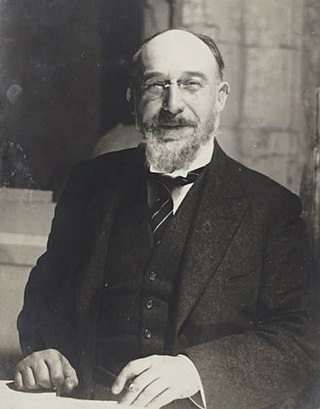
The Trois petites pièces montées is a suite for small orchestra by Erik Satie, inspired by themes from the novel series Gargantua and Pantagruel by François Rabelais. It was premiered at the Comédie des Champs-Élysées in Paris on February 21, 1920, conducted by Vladimir Golschmann. Satie later arranged it for piano four hands and today it is more frequently heard in this version. A typical performance lasts about five minutes.
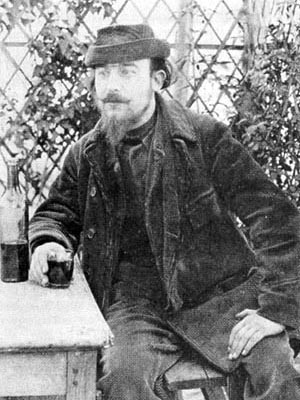
The Pièces froides are two sets of piano pieces composed in March 1897 by Erik Satie. Unpublished until 1912, they marked Satie's break from the mystical-religious music of his "Rosicrucian" period (1891–95), and were a harbinger of his humoristic piano suites of the 1910s.

Sports et divertissements is a cycle of 21 short piano pieces composed in 1914 by Erik Satie. The set consists of a prefatory chorale and 20 musical vignettes depicting various sports and leisure activities. First published in 1923, it has long been considered one of his finest achievements.
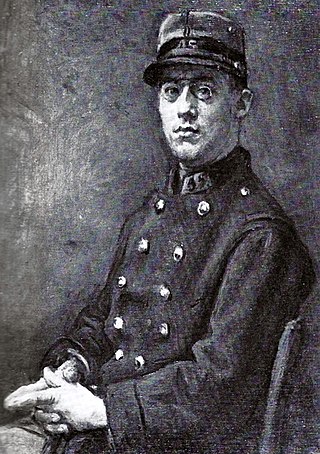
The Sarabandes are three dances for solo piano composed in 1887 by Erik Satie. Along with the famous Gymnopédies (1888) they are regarded as his first important works, and the ones upon which his reputation as a harmonic innovator and precursor of modern French music, beginning with Debussy, principally rests. The Sarabandes also played a key role in Satie's belated "discovery" by his country's musical establishment in the 1910s, setting the stage for his international notoriety.
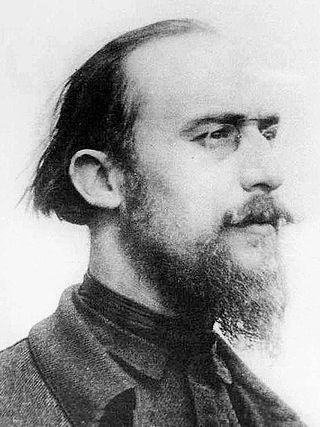
Trois morceaux en forme de poire is a 1903 suite for piano four hands by French composer Erik Satie. A lyrical compendium of his early music, it is one of Satie's most famous compositions, second in popular recognition only to the Gymnopédies (1888). The score was not published until 1911. In performance it lasts around 14 minutes.

The Préludes flasques – Flabby Preludes – is a set of four piano pieces composed in July 1912 by Erik Satie. In performance it lasts about 5 minutes.

The Prélude d'Eginhard is an 1893 composition for solo piano by Erik Satie. It is a notable example of his "Rosicrucian" or "mystic" period. Unpublished during his lifetime, it was issued posthumously in 1929. A typical performance lasts under 3 minutes.

The Véritables Préludes flasques is a 1912 piano composition by Erik Satie. The first of his published humoristic piano suites of the 1910s, it signified a breakthrough in his creative development and in the public perception of his music. In performance it lasts about 5 minutes.

The Quatre petites mélodies is a 1920 song cycle for voice and piano by French composer Erik Satie. It is most notable for its opening lament, Élégie, which Satie composed in memory of his friend Claude Debussy. A typical performance lasts under 4 minutes.

Trois mélodies is a 1916 song cycle for voice and piano by Erik Satie. One of Satie's rare excursions in mélodies, it lasts under four minutes in performance.
The Fête donnée par des Chevaliers Normands en l'honneur d'une jeune demoiselle is an 1892 piano composition by Erik Satie. An example of his Rosicrucian or "mystic" phase, it was published posthumously in 1929. A typical performance lasts about 4 minutes.

Les Pantins dansent(The Puppets are Dancing) is a "poème dansé" for small orchestra or piano composed in 1913 by Erik Satie. It was commissioned for an experimental theatrical event starring Futurist author and dancer Valentine de Saint-Point. Maurice Droeghmans conducted the premiere at the Salle Léon-Poirier in Paris on December 20, 1913.

Vieux sequins et vieilles cuirasses(Old Sequins and Ancient Breastplates) is a 1913 piano composition by Erik Satie. One of his humoristic keyboard suites, it was published by the firm E. Demets that year but not premiered until 1917. In performance it lasts about 5 minutes.

Danse is a short instrumental piece by Erik Satie. Completed on December 5, 1890, it is his earliest known attempt at orchestral composition. The original score has never been published or recorded, but Satie later transcribed it as the En plus movement of his famous piano suite Trois morceaux en forme de poire (1903). A performance would last about 2 minutes.

Le Bœuf Angora(The Angora Ox) is an unfinished tone poem composed around 1901 by Erik Satie. Based on a tale by Lord Cheminot, it was his first attempt at writing for large orchestra. The original score has never been published, though Satie reused a portion of it as the Redite movement of his Trois morceaux en forme de poire (1903). Today the existing work can be heard in a reconstruction for solo piano. In performance it lasts about 8 minutes.